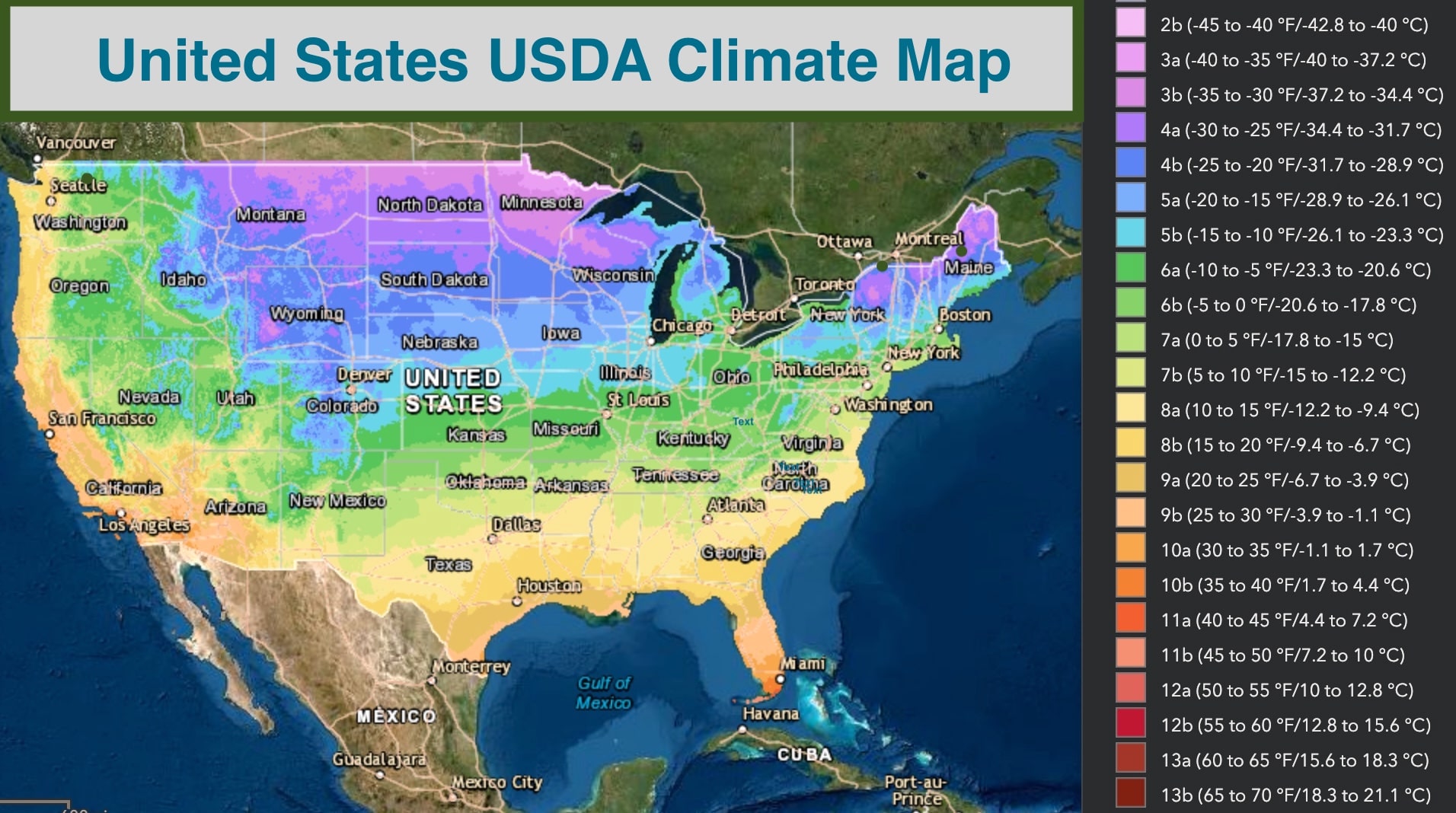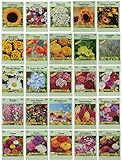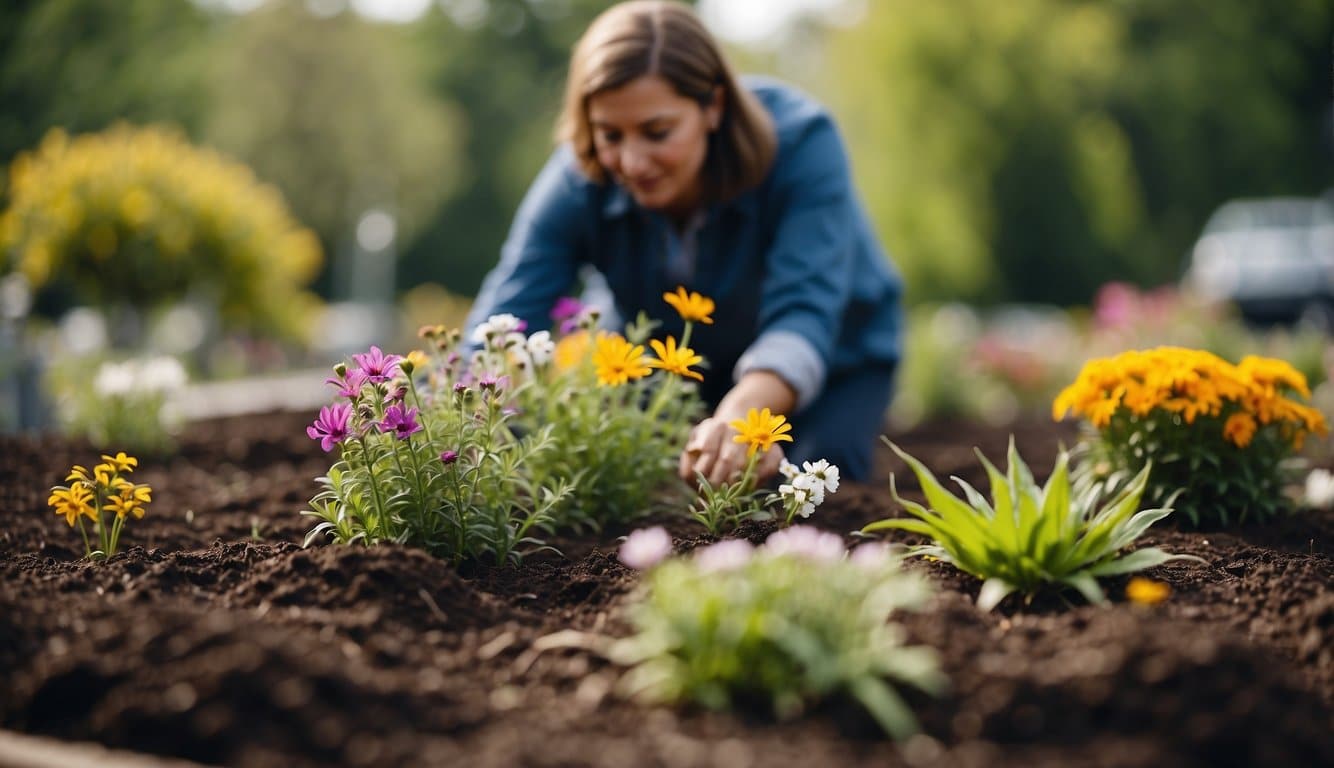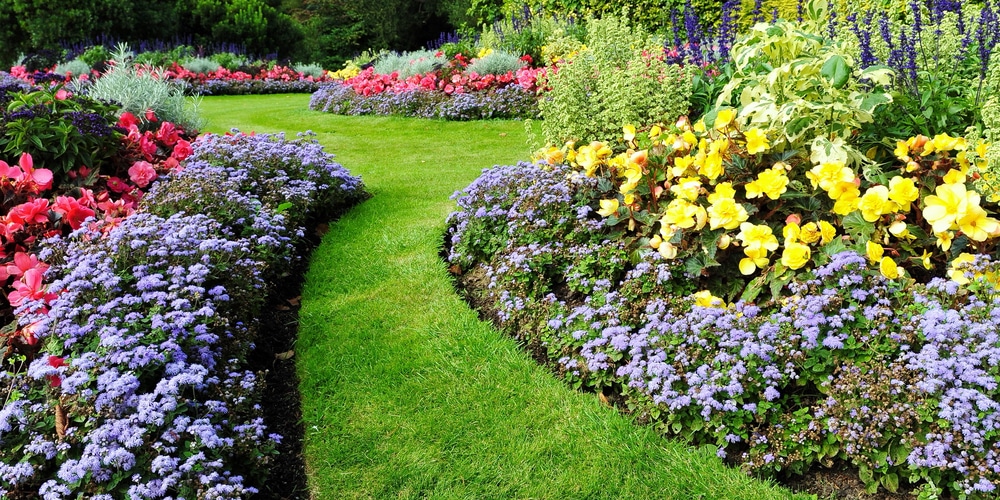Assessing Your Garden Environment
Before inviting native plants into your spring garden, it’s crucial to examine your outdoor space.
Adequate preparation involves knowing your hardiness zone, recognizing the light patterns throughout your garden, and testing soil conditions.
Your Hardiness Zone
- Refer to the USDA Plant Hardiness Zone Map to identify your garden’s zone number.
- This zone number outlines the temperature range of your area, helping you select native plants that are most likely to thrive in your local conditions.
Evaluating Sun and Shade Areas
- Observe and note the hours of direct sunlight each area of your garden receives.
- Areas with more than six hours of sunlight are considered full sun, four to six hours are partial sun/shade, and less than four hours are full shade.
Determining Soil Conditions
- Test your soil using a home testing kit or by sending a sample to a local extension service.
- Your soil’s pH and nutrient makeup will directly influence plant health; look for these key metrics:
- pH level: Most plants prefer a range between 6.0 to 7.0.
- Nutrient levels: Particularly track nitrogen (N), phosphorus (P), and potassium (K).
Selecting Native Plants
Selecting native plants for your spring garden taps into the symbiosis of local flora and fauna, ensuring easier maintenance, better growth, and support for local wildlife.
Peeling back the layers of region-specific horticulture can unveil a vibrant palette of plants ideally suited for your garden’s unique ecosystem.
Researching Native Species
- Identify Local Flora: Connect with local gardening clubs and visit native plant sales for insights.
- Websites like Southern Living provide information on native species that thrive in the South.
- Reference Regional Guides: Utilize resources from organizations like the United States Department of Agriculture for a comprehensive understanding of the species native to your region.
Choosing Right Plants for Garden Areas
- Analyze Garden Conditions: Match plants to the areas of your garden based on sun exposure, soil type, and moisture levels.
- Optimal Growth Patterns: Group plants with similar needs together to create microhabitats that mirror natural ecosystems, as advised by gardenforwildlife.com.
Attracting Wildlife with Native Varieties
- Pollen-rich Flowers: Choose flowering plants that offer pollen and nectar throughout the growing season to appeal to pollinators like bees and butterflies.
- Habitat Foundations: Include plants of various heights and structures to provide shelter and nesting materials, aligning with suggestions from lakesidegardengallery.com.
Designing Your Garden Layout
Creating an inviting garden that thrives throughout the seasons requires thoughtful planning.
Your layout should take into account not only the aesthetic appeal but also the ecological function of each plant in your design.
Planning for Succession Blooming
- Select plants with staggered blooming times: Your aim is to have a few species in bloom at any given point from early spring to late fall.
- Consult bloom calendars: These resources help you mix and match plants according to their peak bloom periods.
Incorporating Varied Plant Heights
Different plant heights add depth and texture to your garden. Follow these steps to incorporate height variety effectively:
- Map out height zones: Taller species like sunflowers or Joe-Pye weed towards the back, medium heights in the middle, and shorter plants like wild strawberries in the front.
- Layer plants: Place taller plants behind shorter ones to create a tiered effect that showcases each species.
Creating Naturalistic Landscapes
Mimic the diverse patterns found in nature to encourage wildlife and create a picturesque setting with these strategies:
- Cluster similar species: Plant in groups to create dense pockets of foliage and bloom, which are visually stunning and beneficial for fauna.
- Use natural lines and curves: Avoid straight lines; curved garden beds and pathways appear more organic and inviting.
Preparing the Garden
To ensure your native plants thrive this spring, a thorough preparation of your garden is crucial.
Effective soil amendment and dedicated weed management set the foundation for a flourishing garden.
Amending the Soil
- Assess Soil Quality: Begin by testing your soil’s pH and nutrient levels to tailor your amendment strategy.
- Organic Material: Integrate organic matter such as compost or leaf mold to improve soil structure and fertility.
- Spread a 2 to 3-inch layer of organic compost over your garden bed.
- Gently work the compost into the top 6 inches of soil.
- Allow the amended soil to settle for a few days before planting.
Information on the importance of soil preparation for native plant gardens can be found within the resource “How to Start a Native Plant Garden – Martha Stewart”.
Weed Management Strategies
- Regular Monitoring: Vigilantly check for weeds throughout the season, as they can rapidly overtake a garden.
- Manual Removal: When weeds appear, remove them by hand or use gardening tools for larger areas. Ensure you remove the entire root to prevent regrowth.
- Mulching: Apply a layer of mulch to suppress weed growth and retain soil moisture.
Utilize these strategies to maintain a healthy garden environment conducive to the growth of native plants. You can find further guidance on preparing your native garden at “How to Incorporate Native Plants into Your Garden this Spring”.
Planting and Maintenance
In this section, we’ll focus on the essential steps for putting native plants in the ground and ensuring they thrive season after season.
Proper Planting Techniques
- Select the right location: Choose a spot that matches your plant’s natural habitat for sunlight, shade, and soil type.
- Reference How to Incorporate Native Plants into Your Garden this Spring for guidance on local species.
- Planting depth and spacing: Ensure you plant at the same depth the plant was in its container and provide ample space between plants to allow for growth.
Watering Native Plants
- Establishing your plants: Initially, water your native plants deeply to encourage root establishment. Afterwards, they generally require less water than non-natives.
- Mulching: Apply a layer of mulch to retain moisture and reduce watering frequency, as suggested by insights from The Barefoot Guide to Native Plant Maintenance.
Ongoing Care and Seasonal Tasks
- Spring: Apply compost or a slow-release fertilizer to support new growth. Divide plants if they become too large.
- Summer: Monitor for pests and diseases. Deadhead flowers to promote more blooms, depending on the species.
- Fall: Cut back dead foliage, and plant new native species as it’s an optimal time for root development.
- Winter: Protect plants from harsh weather with additional mulch if necessary. Evaluate your landscape and plan for spring.
Remember, each native plant will have its own set of specific needs. Refer to Native Plants 101 for a deeper dive into caring for your garden’s unique requirements.
Frequently Asked Questions
Incorporating native plants into your garden not only enhances its beauty but also promotes ecological sustainability. The following key questions address the how-to’s of establishing and nurturing a native plant habitat in your garden this spring.
What are the key steps in creating a native plant garden?
- Select Native Species: Begin by choosing plants that are indigenous to your area, ensuring they will thrive in local conditions.
- Design Your Layout: Aim for a naturalistic look by clustering similar native plants together to mimic their tendencies in the wild.
How should one condition soil specifically for native plant species?
- Soil Testing: Test your soil to understand its composition.
- Native plants generally require less amendment, thriving in their natural soil state.
- Adjust as Needed: If your soil is vastly different from the natural soil type that native plants prefer, adjust it moderately using organic material such as compost.
Is mulching necessary for native plant gardens, and if so, what type should be used?
- Mulching Benefits: Mulch helps to retain moisture, suppress weeds, and provide a finished look.
- Appropriate Mulch: Use organic mulches like shredded bark or leaf mulch that break down over time, adding nutrients to the soil.
What are the environmental benefits of using native plants in landscaping?
- Support for Wildlife: Native plants offer food and habitat for local wildlife, supporting biodiversity.
- Water Conservation: They generally require less water than non-native species, reducing your garden’s water consumption.
Which native plants are best suited for a spring garden in a specific region or climate?
- To find the best native plants for your spring garden, consult a regional native plant society for a list of species adapted to your climate.
- For example, Purple Coneflower is a great choice for attracting pollinators in many regions.
How can one maintain and care for a garden consisting of native plants?
- Regular Observation: Keep an eye on your plants for signs of distress, which could indicate the need for more or less water, the presence of pests, or disease.
- Pruning and Weeding: Prune as needed to encourage growth and remove any weeds that compete for resources with your native plants.
Last update on 2024-04-29 / Affiliate links / Images from Amazon Product Advertising API





